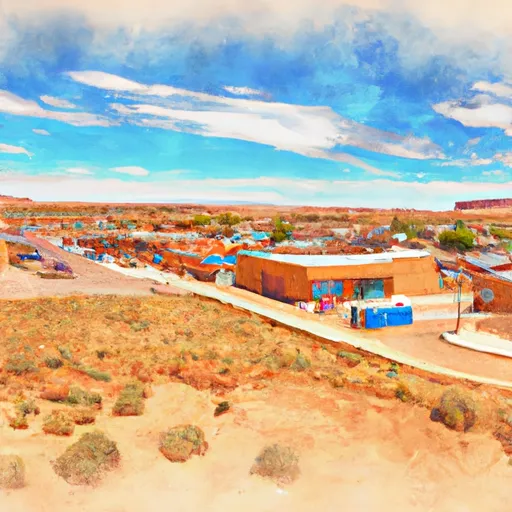-
 Snoflo Premium
Snoflo Premium
Get unlimited access to all our content
With no Ad interruptions! - Start Your Free Trial Login with existing account
Mexican-Hat
Eden Index
Climate
8.7
•
Recreation
3.0
•
Community
•
Safeguard
4.5/10

Mexican Hat, Utah is a small town located in San Juan County, in the southeastern part of the state. The town is named after a unique rock formation resembling a sombrero, known as Mexican Hat.
The climate in Mexican Hat is characterized as a semi-arid desert. Summers are hot, with temperatures often exceeding 100°F (38°C), while winters are mild and can occasionally experience below freezing temperatures. The area receives minimal precipitation, averaging around 10 inches (25 cm) annually.
The town is situated near the San Juan River, a major hydrological feature in the region. This river provides opportunities for various water-based activities, such as rafting, kayaking, and fishing. The San Juan River is known for its scenic beauty and is a popular destination for outdoor enthusiasts.
Additionally, Mexican Hat is surrounded by stunning natural landscapes, including the nearby Monument Valley and Valley of the Gods. These areas offer breathtaking views, hiking, camping, and photography opportunities. Visitors can explore the red rock formations, mesas, and buttes that make this region of Utah so iconic.
In summary, Mexican Hat, Utah offers a semi-arid desert climate, opportunities for outdoor water activities along the San Juan River, and access to breathtaking natural landscapes for outdoor recreation.
What is the Eden Index?
The Snoflo Eden Index serves as a comprehensive rating system for regions, evaluating their desirability through a holistic assessment of climate health, outdoor recreation opportunities, and natural disaster risk, acknowledging the profound impact of these factors on livability and well-being.
Climate Health Indicator (CHI): 8.7
Mexican-Hat receives approximately
182mm of rain per year,
with humidity levels near 53%
and air temperatures averaging around
13°C.
Mexican-Hat has a plant hardyness factor of
7, meaning
plants and agriculture in this region tend to thrive during the non-winter months.
By considering the ideal temperature range, reliable water supplies, clean air, and stable seasonal rain or snowpacks, the Climate Health Indicator (CHI) underscores the significance of a healthy climate as the foundation for quality living.
A healthy climate is paramount for ensuring a high quality of life and livability in a region, fostering both physical well-being and environmental harmony. This can be characterized by ideal temperatures, reliable access to water supplies, clean air, and consistent seasonal rain or snowpacks.
Weather Forecast
Streamflow Conditions
Lower San Juan
Area Rivers
Lower San Juan
Snowpack Depths
Lower San Juan
Reservoir Storage Capacity
Lower San Juan
Groundwater Levels
Recreational Opportunity Index (ROI): 3.0
The Recreational Opportunity Index (ROI) recognizes the value of outdoor recreational options, such as parks, hiking trails, camping sites, and fishing spots, while acknowledging that climate plays a pivotal role in ensuring the comfort and consistency of these experiences.
Access to outdoor recreational opportunities, encompassing activities such as parks, hiking, camping, and fishing, is crucial for overall well-being, and the climate plays a pivotal role in enabling and enhancing these experiences, ensuring that individuals can engage in nature-based activities comfortably and consistently.
Camping Areas
| Campground | Campsites | Reservations | Toilets | Showers | Elevation |
|---|---|---|---|---|---|
| Valley of the Gods Dispersed | None | 5,062 ft | |||
| Mitten View - Monument Valley | 100 | 5,614 ft | |||
| Natural Bridges | 13 | 6,471 ft | |||
| Goosenecks State Park Dispersed | None | 4,968 ft |
Catastrophe Safeguard Index (CSI):
The Catastrophe Safeguard Index (CSI) recognizes that natural disaster risk, encompassing floods, fires, hurricanes, and tornadoes, can drastically affect safety and the overall appeal of an area.
The level of natural disaster risk in a region significantly affects safety and the overall livability, with climate change amplifying these risks by potentially increasing the frequency and intensity of events like floods, fires, hurricanes, and tornadoes, thereby posing substantial challenges to community resilience and well-being.
Community Resilience Indicator (CRI):
The Community Resilience Indicator (CRI) recognizes that education, healthcare, and socioeconomics are crucial to the well-being of a region. The CRI acknowledges the profound impact of these elements on residents' overall quality of life. By evaluating educational resources, healthcare accessibility, and economic inclusivity, the index captures the essential aspects that contribute to a thriving community, fostering resident satisfaction, equity, and social cohesion.

